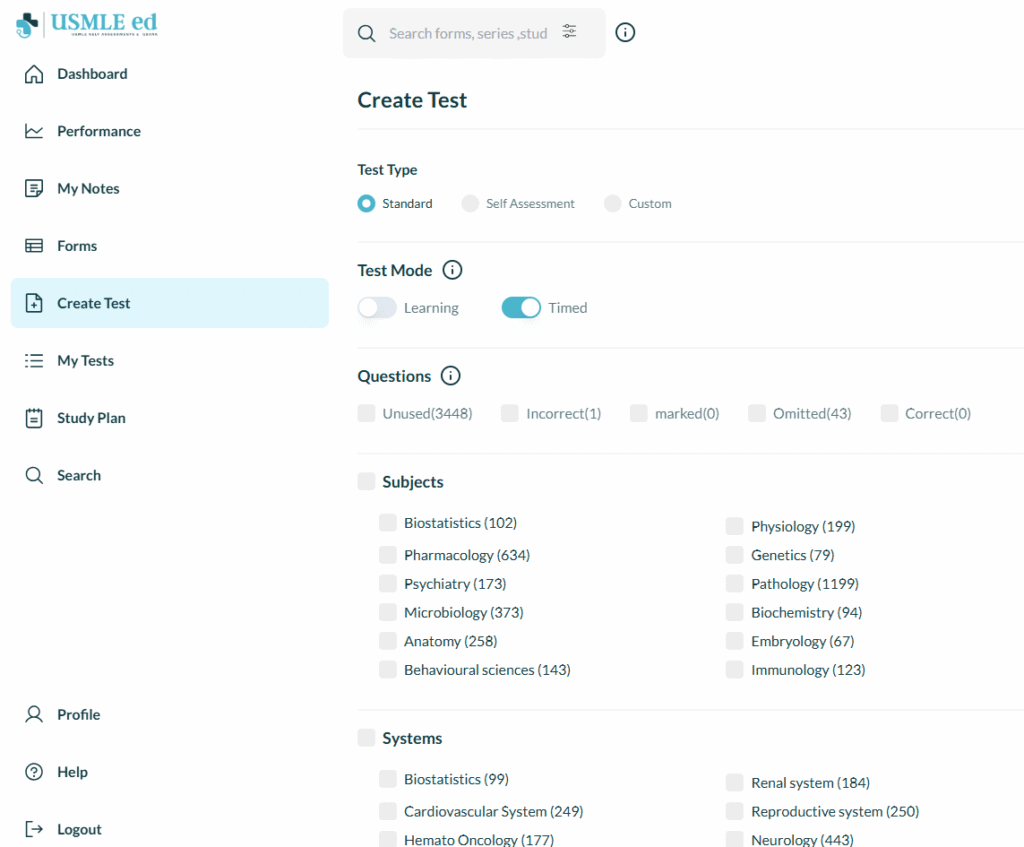QBank Mode: Timed vs Tutor – Which Should You Choose?
Preparing for the USMLE Step 1 is no easy task. With thousands of concepts to master and multiple-choice questions to practice, a QBank becomes one of the most valuable tools in your preparation journey. However, one common dilemma students face is: Should I use timed mode or tutor mode when practicing QBank questions?
Both modes serve different purposes, and understanding how to use them strategically can dramatically improve your score. In this blog, we’ll explore the benefits and drawbacks of each mode, when to use them, and how to combine both effectively for maximum success.

Why Is a QBank Important in Step 1 Prep?
Before diving into tutor vs. timed modes, it’s important to understand why a QBank is the backbone of USMLE preparation. A high-quality QBank helps you:
- Reinforce concepts with practice-based learning.
- Get familiar with the exam-style questions.
- Identify your weak areas quickly.
- Build stamina for the 7-hour exam day.
- Improve recall under pressure.
But your approach to using the QBank matters just as much as the QBank itself. That’s where tutor mode and timed mode come in.
QBank in Tutor Mode: What It Offers
Tutor mode allows you to see the explanation for each question immediately after answering. Instead of waiting until the end of a block, you learn in real time.
Benefits of Tutor Mode
- Instant Feedback – You quickly understand whether your reasoning was correct.
- Stronger Concept Building – Perfect for early prep stages when you need to learn, not just test.
- Active Learning – Reviewing explanations right away makes concepts stick better.
- Stress-Free Practice – No time pressure, so you can focus on understanding.
When to Use Tutor Mode
- At the start of your preparation, when your goal is learning.
- For challenging topics like biochemistry or pharmacology.
- When reviewing your weak subjects.
Tutor mode is best for learning and reviewing, not for simulating the real exam.
QBank in Timed Mode: What It Offers
Timed mode simulates the real exam experience. You complete a block of questions under time pressure, only seeing the results at the end.
Benefits of Timed Mode
- Exam Simulation – Prepares you for the pressure of test day.
- Time Management Practice – Helps you learn pacing for each question.
- Endurance Building – Develops mental stamina for long exam sessions.
- Assessment of Knowledge – Shows how well you apply concepts without immediate feedback.
When to Use Timed Mode
- In the later stages of preparation.
- To simulate exam day conditions before your actual test.
- During NBME-style self-assessments.
Timed mode is ideal for testing and performance evaluation.
Tutor Mode vs Timed Mode: Key Differences
| Feature | Tutor Mode | Timed Mode |
|---|---|---|
| Feedback | Instant after each question | At the end of the block |
| Purpose | Learning & reviewing | Simulating exam conditions |
| Stress Level | Low | High (like real exam) |
| Best Stage | Early to mid-prep | Mid to late-prep |
How to Combine Tutor & Timed Mode in Your QBank
The truth is, you don’t have to choose one mode exclusively. The most effective strategy is a balanced approach:
- Early Phase (Learning Focus)
- Use tutor mode to build strong conceptual foundations.
- Focus on explanations and review why each answer is right or wrong.
- Mid Phase (Transition)
- Start mixing in timed blocks while still using tutor mode for difficult topics.
- Build confidence by practicing under both conditions.
- Final Phase (Exam Simulation)
- Use timed mode exclusively to prepare for exam pressure.
- Treat every block like the real exam to build stamina.
By combining both modes, you ensure you’re not just learning concepts but also training yourself for the mental and physical demands of exam day.

Mistakes Students Make with QBank Modes
Even with a good QBank, students often misuse the modes:
- Using tutor mode only – Leads to weak time management.
- Jumping straight to timed mode – Creates frustration without strong foundations.
- Not reviewing explanations properly – Failing to learn from mistakes reduces the effectiveness of the QBank.
Avoid these pitfalls by using each mode at the right stage of your prep.
Final Thoughts
A QBank is your most powerful weapon for conquering the USMLE Step 1, but its effectiveness depends on how you use it.
- Use tutor mode to learn and strengthen weak areas.
- Use timed mode to simulate the real exam and build endurance.
- Combine both modes strategically across your study timeline.
By striking the right balance, you’ll not only improve your knowledge and reasoning skills but also boost your confidence and performance on exam day.


Leave a Reply